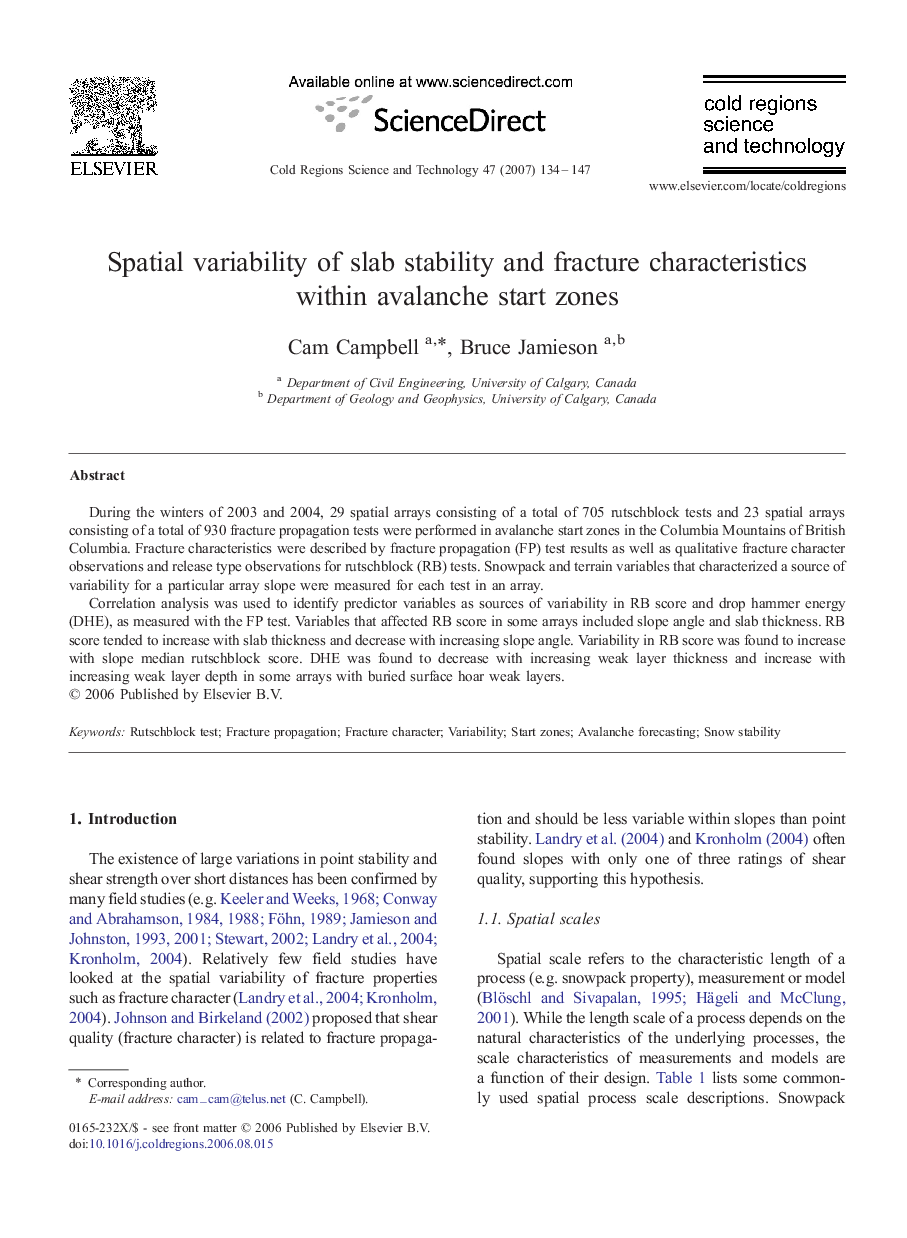| Article ID | Journal | Published Year | Pages | File Type |
|---|---|---|---|---|
| 4676685 | Cold Regions Science and Technology | 2007 | 14 Pages |
During the winters of 2003 and 2004, 29 spatial arrays consisting of a total of 705 rutschblock tests and 23 spatial arrays consisting of a total of 930 fracture propagation tests were performed in avalanche start zones in the Columbia Mountains of British Columbia. Fracture characteristics were described by fracture propagation (FP) test results as well as qualitative fracture character observations and release type observations for rutschblock (RB) tests. Snowpack and terrain variables that characterized a source of variability for a particular array slope were measured for each test in an array.Correlation analysis was used to identify predictor variables as sources of variability in RB score and drop hammer energy (DHE), as measured with the FP test. Variables that affected RB score in some arrays included slope angle and slab thickness. RB score tended to increase with slab thickness and decrease with increasing slope angle. Variability in RB score was found to increase with slope median rutschblock score. DHE was found to decrease with increasing weak layer thickness and increase with increasing weak layer depth in some arrays with buried surface hoar weak layers.
